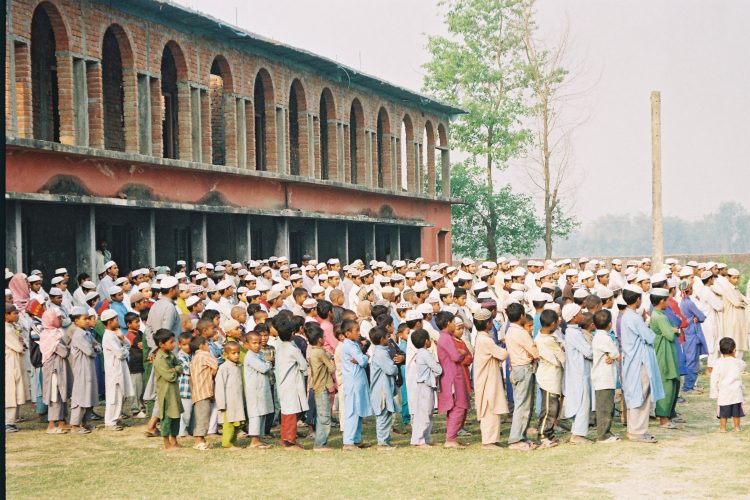Oli overstates Nepali Muslim numbers
Sujit Mainali / May 4, 2017

Muslim children assemble before class at a Madrassa, a Muslim school, in Sunsari district in March 2008. Photo: Mohan Mainali
Speaking in parliament on April 24, CPN-UML Chairman and former prime minister KP Oli said the following:
“The [second phase of local elections] falls in between [the holy month of] Ramzan of the Muslims, who probably make up over seven percent of the total population.”
South Asia Check has examined whether Oli is correct in saying that Muslims in Nepal make up more than seven percent of the national population or not.
A report titled “National Population and Housing Census 2011” published by the Central Bureau of Statistics states that Muslims comprise 4.4 percent of the total population of Nepal. Islam is the third largest religion of Nepal after Hinduism (81.3 percent) and Buddhism (9 percent).
This shows, the UML chief exaggerated the Muslim numbers.
This material is copyrighted but may be used for any purpose by giving due credit to southasiacheck.org.
Comments
Latest Stories
- In Public Interest Covid-19 cases are low, but that’s not an excuse to avoid vaccination
- In Public Interest What is BF.7, the sub-variant that has the world by its grip?
- In Public Interest Threat of a new Covid-19 wave looms large amid vaccine shortage in Nepal
- In Public Interest As cases decline, Covid-19 test centres in Kathmandu are desolate lot
- In Public Interest Dengue test fee disparity has patients wondering if they’re being cheated
- In Public Interest As dengue rages on, confusion galore about what it is and what its symptoms are. Here’s what you need to know
In Public Interest
 Covid-19 cases are low, but that’s not an excuse to avoid vaccination
The Pfizer-BioNTech bivalent vaccines authorised by the Nepal Government provide better protection a...
Read More
Covid-19 cases are low, but that’s not an excuse to avoid vaccination
The Pfizer-BioNTech bivalent vaccines authorised by the Nepal Government provide better protection a...
Read More
- What is BF.7, the sub-variant that has the world by its grip?
- Threat of a new Covid-19 wave looms large amid vaccine shortage in Nepal
- As cases decline, Covid-19 test centres in Kathmandu are desolate lot
- Dengue test fee disparity has patients wondering if they’re being cheated
- As dengue rages on, confusion galore about what it is and what its symptoms are. Here’s what you need to know